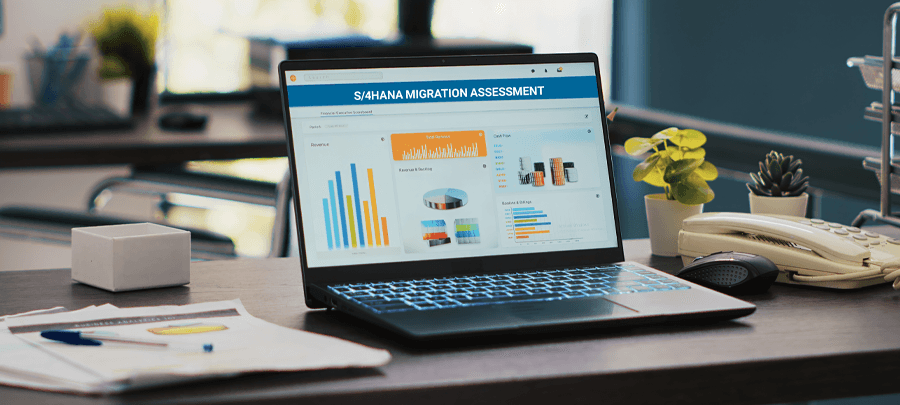Serve your priority customers/market segments with Supply Protection in S/4HANA
31 October 2022


Richard Pascoe
Vice President - Consulting ServicesRichard Pascoe is the VP- Consulting Services, Applexus Technologies, UK. An experienced leader and business development manager, Richard has been accountable for the success of the...
Horizontal Protection: Also known as Core protection. Let’s consider a business that exports its goods to Japan, USA, and Germany, with all three in the same horizontal group. If the business was to receive an order from the USA it has to first check if there is protection for other groups (Japan and Germany). The protected quantity in Japan and Germany is restricted for any demand from the USA and other markets. Similarly, the protected quantity in the USA is restricted for any demand from Japan, Germany, and other markets. To meet the demand for an order received from the USA, the system cannot cannibalize orders from Germany and Japan.
Vertical Protection: Also known as Prioritized supply protection. In this case, you can define priority within the same country across different channels. Channels with higher priority are protected against the demand of another channel with lower priority. However, a channel with higher priority can cut into the quantity of the lower priority channel. Let’s say a business sells to the USA, through eCommerce and retail and eCommerce has a higher priority in that vertical, compared to retail. Upon receiving an order for eCommerce, the system with Supply Protection enabled can cut into the quantity of retail to meet this demand for eCommerce.
Top Benefits of Supply Protection

Serve important customers first: Rank, prioritize, and define your customers as per their importance to your business. Define client priority and ensure the orders reach them first. Also, the raw materials when they arrive are utilized first in manufacturing products for high-value clients. Supply protection ensures each core customer keeps its protected quantity when there’s a high demand for products.
In this case, the client with lesser priority won’t be able to cut into the protected stock of the pivotal client and also won’t be able to allocate more than its protected quantity. During the planning and sales cycle, companies can prioritize customers that deliver more value and ensure there’s never a shortage of goods to close their orders.
Remove protection from customers: Supply Protection allows you to switch and remove the protection from certain customers and move that to another customer if their priority drops. This helps you demote customers, ensuring only the preferred customer gets served first. Move a more strategic customer on top and downgrade a less valuable client.
Whenever a product comes back in stock, it’ll prioritize based on importance, with the most valuable client, higher up the list, getting preference over the least. The system ensures you have complete control over who remains at the top. It enables flexibility, so companies can stay agile and reorder their clients at any time based on who stands to give them more value in the long run.
Serve important channels first: Supply Protection ensures that, if one of the channels is more significant, then goods flow to that touchpoint. Plus, goods reserved for that channel don’t get cannibalized by other channels. If eCommerce makes more sense, over marketplaces, social commerce, etc., then in a scenario where you are low on goods the preference goes to eCommerce.
Now, if there is an order pending from other channels at the same time, Supply Protection ensures that the order to other channels can only be confirmed if there is enough stock left after fulfilling the demands of eCommerce. To guard the stock, you can define specific characteristics, rules, and values against each group.
Deliver on promised dates: Companies often commit to a date but witness delays in production and aren’t able to meet the delivery on time. Giving out dates uninhibited and being able to deliver the goods on or before those dates is important for long-lasting partnerships. Companies would thus need a system in place to fulfill these sales orders in a balanced way.
According to online shoppers in the UK, among the reasons for late or non-delivery of an online order, “Not shipped on time by the retailer” got a whopping 34% - Statista [2]
Supply Protection, by prioritizing and segregating goods smartly helps ensure all the tier-1 companies/channels are served first and the remaining goods can be directed towards addressing the needs of other sources. Dispatching goods randomly can see your business come up short when expected to fulfill the demands of the more valuable clients/channels – leading to lengthier lead times and extended delivery dates.
Define rules on the backend: Supply Protection allows businesses to define objects, form a Supply Protection group, set the restricted quantity, set the consumed quantity, set a time horizon, set the Remaining protection, and set the planning period. Businesses can set various protection groups with different priorities to determine who will get their hands on the order first.
The time bucket allows suppliers to define how long do you wish to activate Supply Protection. In some cases, businesses choose to protect quantities for essential groups at the beginning of the season and deactivate the same towards the end. The time bucket can correspond to either the material availability date or the requested delivery date of the in-demand stock.
Makes internal stock management and supply easier: Supply Protection makes it easier to internally determine when you can make the product available to the customer. The automated system handles much of the weight-lifting and relieves the dispatch team of manual chores. Instead of logging and keying data on a spreadsheet, you can use the backend to view the updated stock count.
The system automatically checks stock availability across all locations, from warehouse, backroom, dropshipping locations, and other channels, and compares it against the demand from different regions, customers, and channels. This allows it to come up with the right sharing strategy to make order fulfillment much more seamless, error-free, and time-efficient.
Better relationship with customers: Ultimately, if you can stick to delivery dates, expect to forge a deeper alliance with your customer. Besides the quality of the stock, being able to fulfill large-scale order demands or delivering bulk shipments in an expedited manner, impresses clients and leads to a higher likelihood of order placements. Don’t let an unpredictable supply chain get in the way of serving your preferred channels/customers better.
More transparency and awareness about the lead times and the final delivery timeline improves your relationship with clients. Knowing how long it’ll take to either mass manufacture a product or deliver the shelf stock can make a difference in how they perceive you. Keeping your stock regulated and protecting it from being consumed by other clients helps accept and fulfill more orders. Supply Protection lets you stay on top of your supply chain for better management and deliverability.
Keep all stock in one place: Supply protection helps businesses keep all their stock in one location/bin in the warehouse. Instead of having to move the goods around or spreading your inventory across multiple storage locations or even warehouses to protect channels, you can now focus on centralizing the same. This makes it easy to track, manage, audit, and analyze the stock in real-time, as all the items are stored and counted from the same centre – removing the need to tally multiple touchpoints.
Pooling all the stocks in one location also helps with logistics, as pickers would know where to go since all the goods are now consolidated in one place. Supply protection removes the endless hassle of having to micromanage SKUs at different sites. This allows you to optimize warehouse organization, prevents shortage, maintains quality control, simplifies planning around future orders, and saves precious time & effort for employees.
Supply Protection in S/4HANA ensures you won’t ever have to worry about the manual physical movement of products. Businesses can keep all the stocks for all their different customers and all the different channels in one bin and move them around within the system without any manual intervention.
Why Choose complete ERP, rather than best-of-breed solutions?
All-in-one Enterprise Resource Planning (ERP) systems such as SAP S/4HANA suite have become increasingly preferred over the hyper-focused, best-of-breed solutions that only address one side of your business, run disconnected from other areas, and therefore lack insights, which makes it impossible to factor activities across your organizations into its decision-making.
The storm of disorder in supply chains has intensified for U.S. manufacturers, with lead times on materials and equipment stretching to highs in April. Figures from the Institute for Supply Management showed it’s taking an average of 100 days to receive production materials, resulting in transportation and shipping delays - Bloomberg[3]
The holistic SAP S/4HANA with better and deeper visibility is much more integrated and tightly connected with all areas, therefore decision-making within S/4HANA is so much more automated and supported with the data. The ability to be in the know-how through evaluation of other aspects and after considering all the relevant variables across different business functions helps to make a more well-adjusted and balanced decision.
Knowing what is happening across the length and breadth of your organization helps to take more informed decisions and that is exactly how Supply Protection within SAP S/4HANA behaves. It will be able to closely monitor the orders from different clients/channels/regions, the current protected stock levels, delivery timelines, required quantity, inbound delivery, available raw materials, OOS raw materials, production time, and other aspects to take the most logical decision.
Wrapping Up
In this day and age of next-day deliveries, companies can’t risk not serving their customers on time. When you give your word, you are obligated to shoulder the responsibility to close that target. Not doing so can risk your relationships and deplete orders. Dispatching orders require you to develop internal forecasting and fulfillment capabilities to meet or exceed the demanding expectations.
This is where Supply Protection comes to the table - to protect your limited supply and to ensure your most important market, channels, and customers will receive their merchandise on time. The virtual demand reservation through Supply Protection helps restrict goods to serve your flagship segments first to maximize short-term and long-term profitability.
1 Research on Supply Chain Priorities and Investments, (n.d.)., Research on Supply Chain Priorities and Investments, Supply Chain Research.
2 Chevalier S, May 4, 2022, Reason for late or non-delivery of an online order according to online shoppers in the United Kingdom (UK) as of November 2017, Statista, https://www.statista.com/statistics/945132/late-or-non-delivery-of-online-orders-reasons-uk/
3 Golle V and Pickert R, May 3, 2022, Storm of Supply-Chain Disorder Worsens for U.S. Manufacturers, https://www.bloomberg.com/news/newsletters/2022-05-03/supply-chain-latest-labor-long-lead-times-a-one-two-punch-for-u-s-factories











